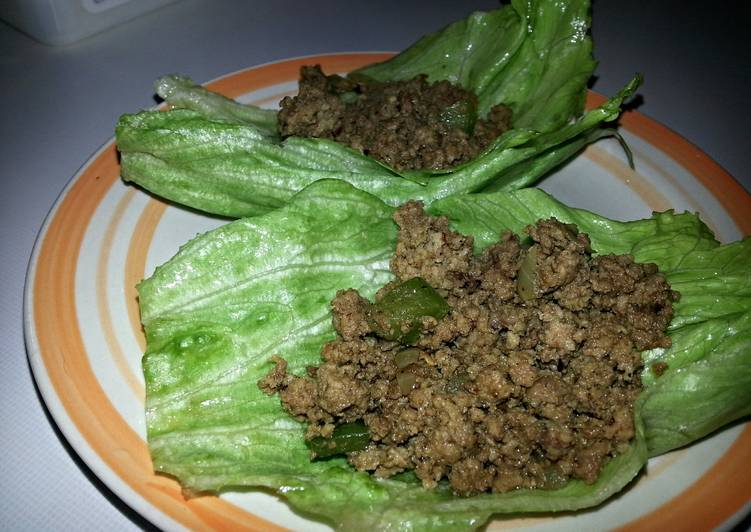
Hello everybody, hope you’re having an incredible day today. Today, I will show you a way to prepare a special dish, tonjiru : a miso based pork soup filled with vegetables. One of my favorites food recipes. This time, I will make it a bit tasty. This is gonna smell and look delicious.
Tonjiru : A miso based pork soup filled with vegetables is one of the most popular of current trending meals on earth. It’s enjoyed by millions daily. It is simple, it’s fast, it tastes yummy. Tonjiru : A miso based pork soup filled with vegetables is something that I have loved my entire life. They’re fine and they look wonderful.
Tonjiru is a savory miso soup with pork and root vegetables. Packed with an excellent source of vitamins, it's absolutely nourishing and soul-fulfilling! If you ask me what is my favorite miso soup, I would immediately say Tonjiru (豚汁).
To get started with this recipe, we must prepare a few ingredients. You can have tonjiru : a miso based pork soup filled with vegetables using 14 ingredients and 15 steps. Here is how you cook that.
The ingredients needed to make Tonjiru : A miso based pork soup filled with vegetables:
- Take 5 cm Konbu(edible kelp) and 600 cc water
- Get 130 g Pork belly
- Make ready 3 cm Daikon Radish
- Make ready 3 cm Carrot
- Take 2 Shiitake mashrooms
- Get 1/4 Cotton tofu
- Prepare 1/4 Green onion
- Make ready 1 tbs Sesami oil
- Prepare pinch salt
- Take 2 tbs Miso
- Make ready 1/2 tsp Soy sauce
- Make ready 1/2 tsp Mirin
- Get 1 tbs Sake
- Make ready Japanese 7 spice mixture (Shichimi togarashi) as you like
Even though it is a Miso Tonjiru has a distinct pork flavor and strong taste from Gobo. Don't get alarmed because of Gobo, it actually tastes very good. All the flavor of the pork. Miso soup is great anytime of the year, but in colder seasons, I like to make something heavier and heartier, like adding more vegetables and sliced of pork and transfom it into a tonjiru.
Instructions to make Tonjiru : A miso based pork soup filled with vegetables:
- Soak the Konbu in the water and let it stand 10 hours in the refrigerator.
- Peel the Daikon radish and carrots, cut them into 4 wedges each and cut the wedges into 5mm slices.
- Cut the pork into 5cm strips.
- Remove stem of the mushrooms and cut the cap into thin slices.
- Cut the naganegi-onion into 5 mm slices.
- Pluck off the tofu by hand into bite sized pieces and put in the boiling water for 2 minutes. Take it out, let it cool.
- Put 1 tbs of sesame oil into a pot then place on medium heat. Add the pork and fry until the color is white.
- Add the daikon radish, carrots and add a pinch of salt. Fry the ingredients for 1 minute.
- Add 1 tbs of sake, change the heat to low. Cover with a lid and let it simmer for 3 minutes.
- Change the heat to high and add Konbu along with the water it was soaking in. Add shiitake mushrooms.
- Let the dish simmer and remove the Konbu just before it starts to boil.
- Dissolve 1 tbs of miso into the pan and change the heat to low, then let it simmer for another 10 minutes.
- Add tofu and let it simmer for 10 minutes.
- Add naganegi onion, 1/2 tsp of soy sauce, 1/2 tsp of mirin, 1 tbs of miso. Turn off the heat just before it starts to boil.
- If you have time, let it cool and heat one more time before you eat. This will make the ingredients really soak up the flavor of the soup!
Some of the more typical vegetables in a tonjiru are carrot, daikon, sweet potato, and burdock root. The traditional tonjiru is made with tofu, miso, and dashi stock, combines pork with vegetables such as daikon, burdock, sweet potato, and konnyaku. The whole tonjiru dish is very comforting in this cold winter weather. I threw in some wakame seaweed in the soup as well. This is also a kind of dish.
So that’s going to wrap this up with this special food tonjiru : a miso based pork soup filled with vegetables recipe. Thank you very much for your time. I am sure you can make this at home. There is gonna be more interesting food at home recipes coming up. Don’t forget to bookmark this page in your browser, and share it to your loved ones, friends and colleague. Thank you for reading. Go on get cooking!


